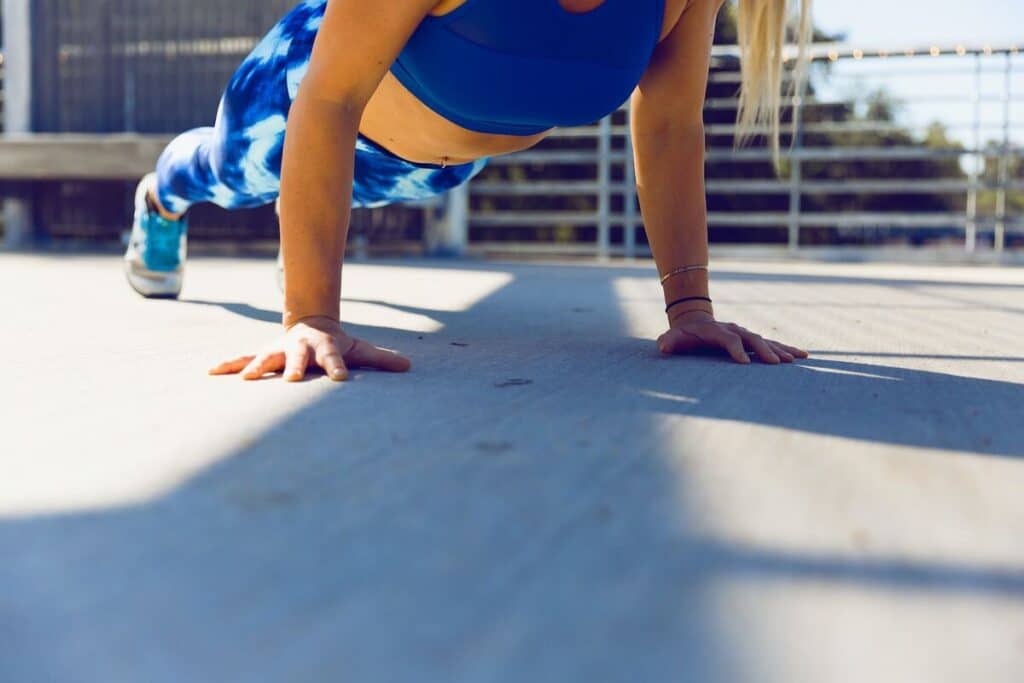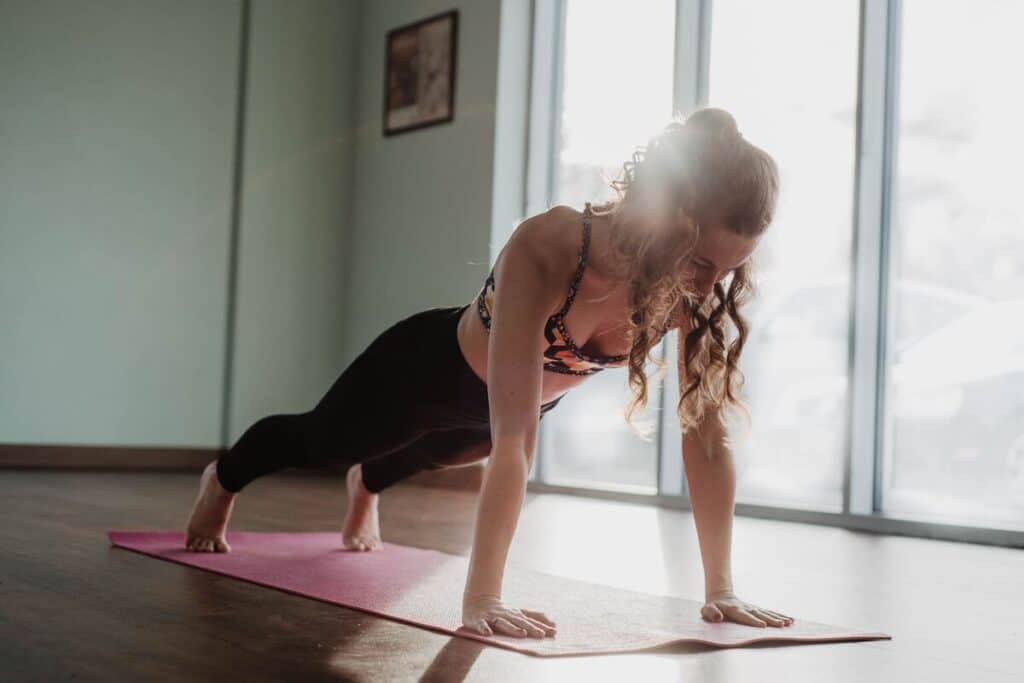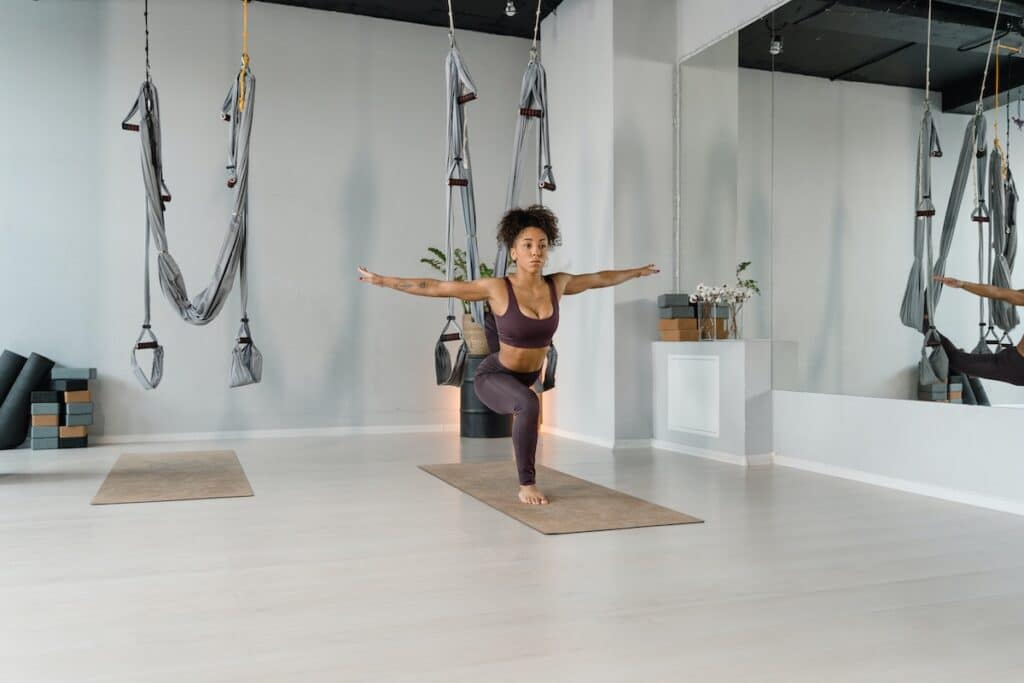Get a strong and stable core with these easy-to-follow functional core exercises. These exercises focus on strengthening your core muscles, which help to stabilize your spine and improve your balance.
In this article
If you want to strengthen your body and improve your overall fitness level, then these exercises could be just what you need!

In this article, we’ll look at the benefits of functional core exercises, as well as different types of these movements and tips for doing them safely.
So let’s dive in and get started with some functional core exercise basics!
What are functional core exercises?
Functional core exercises are designed to target the muscles in the middle of your body, including those deep within your abdominal cavity. These muscles provide support for your spine and torso and help stabilize you during everyday activities like walking, running, jumping, lifting heavy objects, or carrying groceries.
Many functional core exercises involve using multiple muscle groups at once to increase strength and endurance. Examples of these types of exercises include planks, medicine ball slams, burpees, mountain climbers, and even yoga poses such as the downward dog.
Functional core exercise programs can also incorporate traditional weight-bearing movements such as squats or deadlifts that focus on maintaining proper form while still engaging the core musculature. Additionally, some classes may use resistance bands or kettlebells to add an extra challenge for more advanced exercisers.
Moving onto the benefits of functional core exercises…
What are the benefits of functional core exercises?
Doing functional core exercises can help you improve your balance and stability, as well as reduce the risk of injury. With regular practice, you’ll become stronger in your core muscles and be able to perform everyday movements with greater ease.
Poor posture strains muscles, ligaments, and joints that may lead to discomfort or even cause injury.By regularly engaging in functional core exercises, you can strengthen the muscles of your core that help to support proper alignment and improve posture.
This helps to protect your body from potential injuries related to incorrect postural movements. In addition, a strong core also increases balance which is essential for activities such as running or lifting weights.
By focusing on proper form throughout each movement, it’s possible to achieve optimal results without increasing the risk of injury. These types of exercises not only help build strength but also emphasize coordination between the upper and lower body, which is essential for efficient movement patterns.
Types of Functional Core Exercises
When it comes to functional core exercises, there are a few key moves that you should know.
Plank exercises are great for strengthening your core while dead bugs and bird dogs help to improve your balance and coordination.
Single-leg balance exercises not only work your core but also help you develop dynamic stability.
All of these exercises focus on engaging multiple muscle groups at once to provide an effective full-body workout.
Plank Exercises
Planking is one of the best exercises for strengthening your core, and research suggests it can even help reduce back pain! By holding your body in a plank position, you are engaging multiple muscles throughout your torso and limbs which helps with proper posture, balance, and stability.

This exercise also helps you learn to better control your movements while increasing strength as well as flexibility. Plank exercises are great for targeting the abs, chest, shoulders, glutes, thighs, and lower back muscles. Plus, it only takes a few minutes to do each day, so it’s an easy way to get in some extra core work that will make a big difference over time!
With practice and consistency, you’ll find planking gets easier as you build strength. So don’t be discouraged if you have trouble at first – everyone starts somewhere! And by regularly doing these exercises, you’ll soon see results.
From there, it’s just a matter of adding variations to challenge yourself even further. Next up, we’ll look into ‘dead bug’ exercises which also offer great benefits for improving core strength.
Dead Bug Exercise
The plank is great for engaging your core and developing strength and stability, but it can be difficult to really target the muscles of the abdomen. That’s where dead bug exercises come in.
Dead bug exercises are a great way to challenge and tone your abdominal muscles while improving coordination and balance.
How to do the dead bug exercise:
- To perform the exercise, lie on your back with your arms extended straight above you, palms facing each other, legs bent at 90 degrees, and knees pointing toward the ceiling.
- Lower one arm over your head while simultaneously extending the opposite leg outward until both limbs are hovering just above the floor.
- Repeat this movement with opposite limbs and continue alternating sides for 10-15 repetitions or for time.
Dead bug exercises offer a number of benefits. They engage multiple muscle groups throughout your body, including both upper arms, abs, obliques, glutes, hamstrings, and quads. This aids in improved posture by strengthening core muscles which help support good spinal alignment.
They also improve coordination as they require control from both sides of your body simultaneously, and work on balance as they require you to maintain control while shifting weight between opposing sides of your body.
Bird Dog Exercise
Try bird dog exercises for a fun and effective way to strengthen your muscles! This exercise is great for improving core stability, posture, and balance. It also helps you build strength in the glutes, hamstrings, lower back, and abdominals.
How to perform the bird dog exercise:
- To do the bird dog exercise correctly, start by getting on all fours with your hands shoulder-width apart and your knees hip-width apart.
- Make sure that your spine is neutral and that your head is aligned with the rest of your body. From this position, slowly raise one arm up while keeping it straight while simultaneously raising the opposite leg until both are parallel with the floor.
- Hold this position for two seconds before returning to starting position. Repeat this motion 8-12 times per side for best results.
Bird dog exercises can be beneficial if done properly because they target multiple muscle groups at once while helping improve balance and coordination skills. Plus, they can be modified to be easier or more challenging depending on one’s fitness level – making them perfect for all experience levels!
Single-Leg Balance Exercises
Single-leg balance exercises offer an effective way to challenge and strengthen the body’s stabilizing muscles. These types of exercises target the muscles in your hips, core, and legs that help maintain a neutral spine and control single-limb motion.

Single-leg balancing can be done while holding static positions or by performing dynamic movements such as lunges and hip raises. This type of exercise can also help improve coordination, agility, and overall stability.
By engaging all of these muscle groups at once, you can create a powerful workout that will benefit your entire body. With just a few simple modifications, you can make this exercise even more challenging for yourself so you get the most out of your workout every time!
With regular practice, you’ll feel stronger and more stable during daily activities.
Moving on from here to tips for doing functional core exercises is natural as it provides readers with practical advice on how they can incorporate this type of exercise into their routine.
Tips for Doing Functional Core Exercises
Exercising your core muscles can help improve balance and stability, and research shows that over 70% of people who do functional core exercises experience a decrease in lower back pain. To ensure the most effective workout for your core muscles, it’s important to know the correct techniques, as well as understand what safety precautions are necessary.
Doing functional core exercises correctly can not only increase muscle strength but also help you avoid potential injuries. When performing any type of core exercise, it is essential to maintain good form throughout the entire movement. Proper posture and alignment will help you engage the right muscles and maximize the effectiveness of each exercise.
It is also important to use slow controlled movements when doing these exercises so that you don’t overexert yourself or cause an injury. Be sure to take breaks between sets and listen to your body if something feels wrong or uncomfortable in any way.
It’s also important that you warm up before starting any type of functional core exercise routine. A light cardio warm-up such as jogging or walking can help get your heart rate up and prepare your body for more intense activity. Additionally, stretching before beginning is always beneficial since it helps loosen tight muscles and improves flexibility, which will make it easier to perform each move correctly without risk of strain or injury.
With these tips in mind, you’re set for a safe yet effective workout with functional core exercises!
Safety and Precautions
When doing any kind of core workout, it’s essential to take safety and precautions seriously in order to ensure a safe and successful exercise routine. Here are some important tips for staying safe when performing core exercises:
| Tip | Explanation |
|---|---|
| Warm Up | Warming up your body before exercising is important as it helps increase blood flow, reduce the risk of injury, and can help improve your performance. Try dynamic stretches such as leg swings or arm circles to get your body ready for the workout. |
| Listen To Your Body | It is important to listen to your body and pay attention to how you feel when exercising. If something doesn’t feel right or you experience any pain/discomfort, you should stop immediately and seek medical advice if needed. |
| Proper Form & Technique | Make sure that you are using proper form and technique for each exercise so that you can get the most out of the movement while avoiding injury. Focus on using slow, controlled movements with good posture throughout each exercise. |
In addition to these tips, always make sure that you have access to appropriate equipment (such as weights or resistance bands) before beginning a core workout routine. It is also beneficial to work with an experienced fitness instructor or personal trainer who can help guide you through proper form and technique so that you can stay safe while achieving your fitness goals.
Frequently Asked Questions
How often should I do functional core exercises?
It depends on your fitness goals and current level of strength. Generally, performing functional core exercises two to three times a week is recommended for most people.
Are functional core exercises suitable for beginners?
Yes, functional core exercises are suitable for beginners. Not sure if you have the strength or flexibility? Start slow and focus on proper form to build up your capabilities safely. You’ll soon be ready to challenge yourself more!
Is it possible to do functional core exercises at home?
Yes, it is possible to do core exercises at home. With the right equipment and instructions, you can easily get strong and stay in shape without going to a gym.
What other exercises can I do to complement functional core exercises?
You want to work on core strength? Beyond functional core exercises, try adding in planks, bridges, and squats. These moves not only help strengthen your core but also challenge other muscles in your body. For example, a bridge helps you build a strong back and glutes while engaging the core. Give it a try – you’ll be feeling the effects of an all-around workout!
Is there any special equipment needed for functional core exercises?
No, you don’t need special equipment for core exercises. You can use everyday objects to get a great workout. Try using a towel, ball, or even your own body weight!
Conclusion
You’ve now learned about the advantages of functional core exercises and the different types of exercises to include in your routine. You also know how to execute them safely.
All that’s left is to get started! With regular practice, you’ll soon be able to reap the rewards of stronger abs and a more balanced body. As an added bonus, you’ll feel fit as a fiddle after each workout – totally worth it!
So don’t delay any longer – start incorporating functional core exercises into your daily routine for improved strength and stability. Your future self will thank you for it!
Key Takeaways
- Functional core exercises focus on strengthening core muscles for stability and balance, and can incorporate traditional weight-bearing movements like squats and deadlifts.
- Proper form is essential to avoid injury and achieve optimal results, and regular practice leads to improved posture, balance, and mobility.
- Strengthening weak muscles like glutes and core muscles is important for better posture, and good posture while sitting or standing is essential to avoid discomfort or injury.
- Specific exercises like planking, dead bug exercises, bird dog exercises, and single-leg balance exercises can challenge and tone multiple muscle groups for better balance, coordination, and stability.
